I’ve been having recurring daydreams of an Australian trip Bill and I undertook around this time two years ago, or was it three?
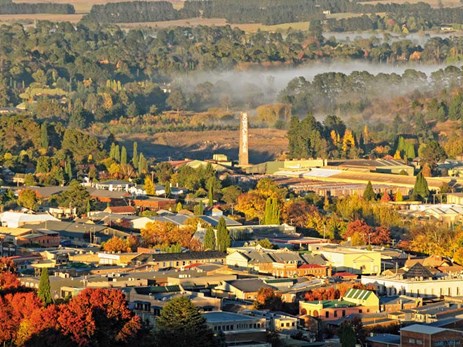 |
Autumn view of Bowral |
The years are crashing into each other like a row of collapsing dominoes. But the timing is not as important as the fact that I’m planning to go back. Summer was setting in when we headed south from Sydney in our frog-coloured Ford Falcon towing a borrowed caravan.
Streams of Grey Nomads were returning home from the north to avoid the heat, but we were heading into a part of Australia we knew little about.
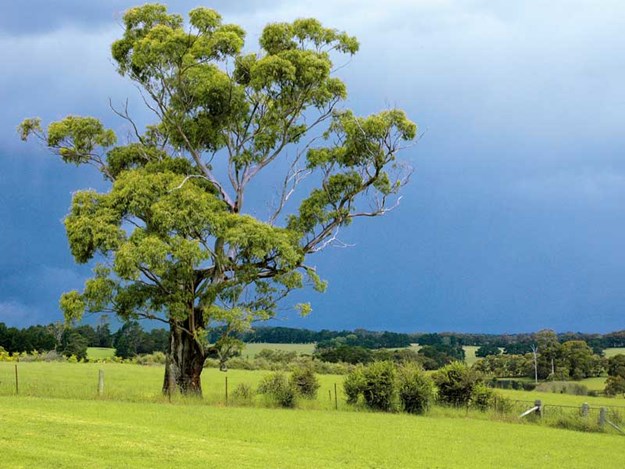 |
Storm brewing over the Southern Highlands countryside |
In such a vast and sunburnt continent, the Southern Highlands of New South Wales come out of the blue—a damp, lush, ordered corner of Australia where dairy herds and polo ponies graze on curvaceous grasslands, and oak trees and poplars shade mansions built in the 1800s as summer escapes for Sydney’s well-to-do. The area is only an hour’s drive from the city’s manic rhythms and perfect for drifting around in an RV.
Save for scatterings of gum trees, the odd snake or two, and flocks of roosting galahs, the Highlands have always strived to be as English as the English or at least as Scottish as the Scottish.
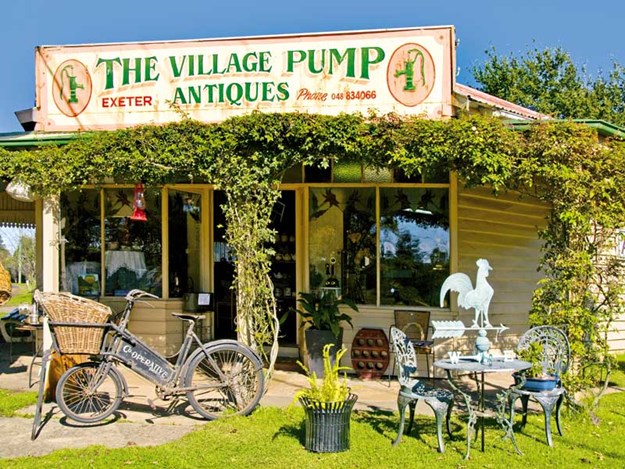 |
Exeter’s intriguing antique shop |
This is evidenced by antique shops, antiquarian bookshops, old English-style pubs, small Gothic churches built of stone, and cosy accommodation with names such as Chelsea Park, The Harp, and Highfield Cottage.
Our introduction to the Highlands was the town of Bundanoon. The buildings that line Bundanoon’s (Bundy’s) one main street look like a 19th-century film set.
It’s a gentle place except for once a year when bagpipe bands gather from all over New South Wales and the town rings to the sound of reels and robust Scottish ribaldry such as haggis throwing and caber tossing.
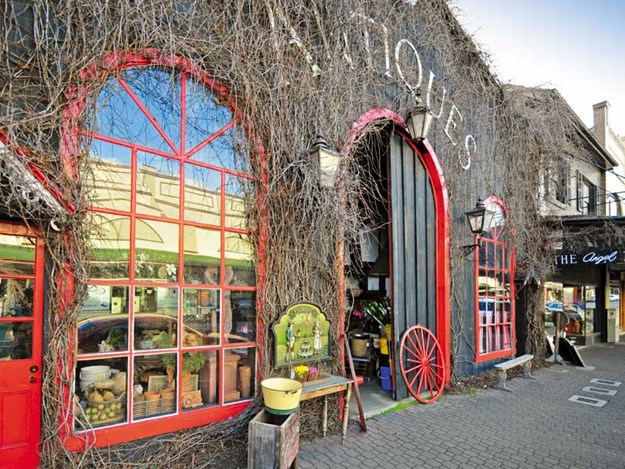 |
A collector’s dream location in Bowral |
But cricket is the Highland’s favourite sport and in the tulip-festival town of Bowral, slightly north of Bundanoon, Sir Donald Bradman began his illustrious career. On the Bradman oval, ‘the boy from Bowral’ honed the skills that made him the greatest cricketing batsman the world has seen.
To an Australian cricket aficionado, this is the game’s spiritual home and an excellent museum celebrates his life.
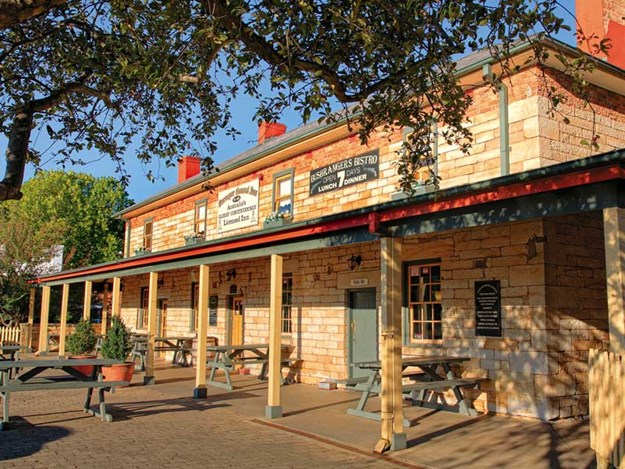 |
The Surveyor General Inn, Berrima, claims to be the oldest continuously licensed inn in Australia |
That night, we parked in a leafy camping ground close to town and a fellow camper and passionate cricketer regaled us with tales of Bradman’s prowess. The next most visited village in the Southern Highlands is Berrima on the banks of the Wingecarribee River.
Built in the 1830s, its stone buildings and protected trees are an example of the era’s small-town Australia. We downed a beer at The Surveyor Inn, Australia’s oldest licensed hotel (take that with a pinch of dust), and settled for the night in the tiny four-stand camping area by the river.
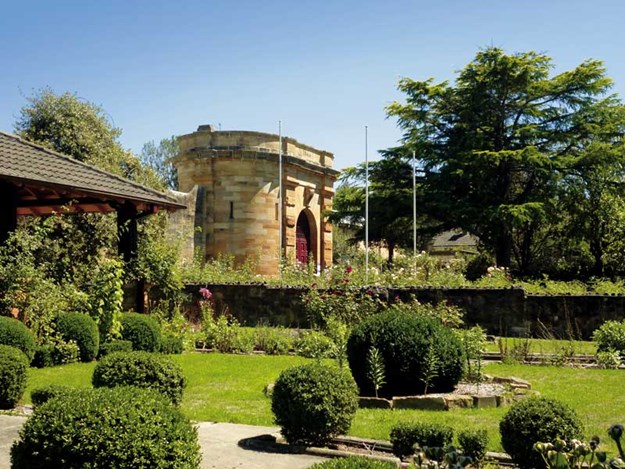 |
Berrima’s historical prison that is still in use today |
The most dominant building in Berrima has an impressive tower. But not everybody who entered therein would have been impressed. This powerful edifice (1839) was a prison with a nasty reputation and in the First World War became an internment camp for enemy aliens and POWs. Today, it’s still a prison.
The galleries, cafes, and boutique shops that grace the other old buildings in town display gifts for pets and people, pampering paraphernalia that catch the eye, tickle the palate, and empty the pocket.
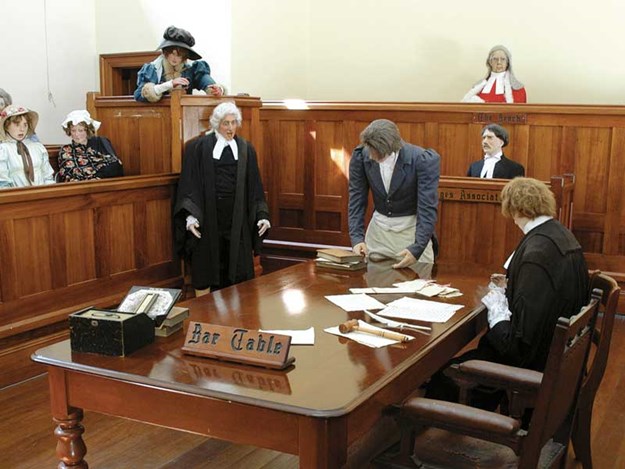 |
Diorama of one of the Berrima Court’s most notorious trials |
I was also enchanted by Exeter, which is 700 metres above sea level—a tiny dot of a village comprising a stone church, a general store, an antique shop, and arguably the cutest operating railway station this side of the Black Stump.
Robertson, closer to the coast, is not quite as charming, although, it refers to itself as “the green heart of the highlands”. A large unbecoming potato effigy surrounded by daffodils also hails it as the Potato Capital of New South Wales.
From Exeter, we zigzagged down a steep escarpment of cascading rainforest into the lush pasturelands of Kangaroo Valley, effectively leaving the Highlands behind. The valley, one of the loveliest in Australia, was best known for is dairy farms.
In the township, many old buildings that served the industry still stand—the banks, general stores, and farm suppliers. They are the haunt of artists, writers, composers, and musicians.
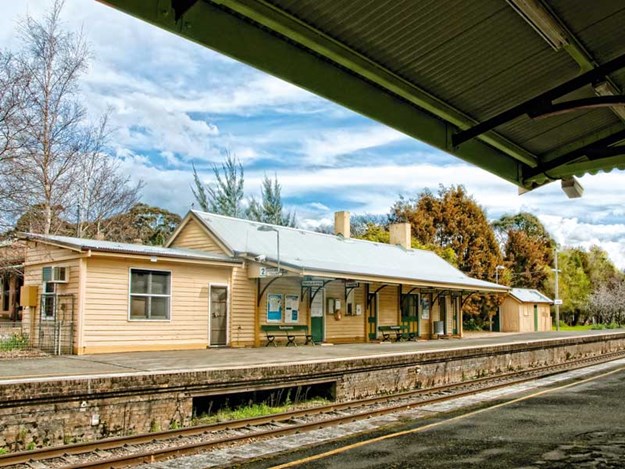 |
Exeter Train Station (circa 1891) |
At weekends, bikers—who love the twisting drive down the escarpment—park their gleaming Harleys and Beamers in the main street, and Sunday drivers sip skinny flat whites in the shade and potter around the art galleries, cafes and craft shops, and the old brick pub.
Nearby is Belmore Falls in the heart of Morton National Park, and we sauntered through groves of serrated leaves to look at the view. The long gush of water cascades down the rust-coloured walls of Kangaroo Valley. Cliffs, smothered in eucalypt forest, rolled out into the hazy distance holding all the spiritual power of an ancient landscape.
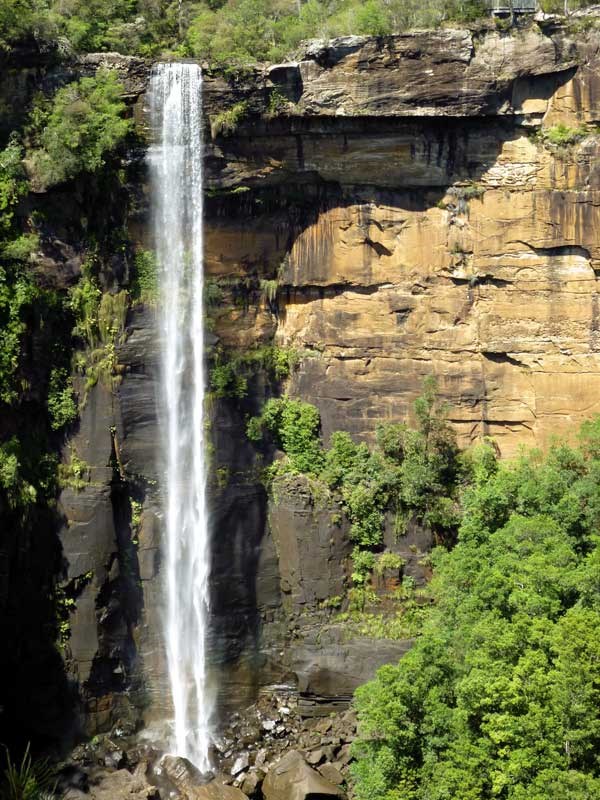 |
Belmore Falls, Kangaroo Valley |
At night, we set up at Bendeela, a freedom camping area surrounded by forest beneath a towering escarpment. An owl hooted in the lonely night and early next day mist swirled around the cliffs while a wombat, clumping along on his gumboot legs, nosed his way through the camp.
From Kangaroo Valley, it’s three-and-half hours south to the Sapphire Coast, which is just down the road in Australian terms. On a map, the coast and hinterland look moth-eaten by the outlines of numerous national parks.
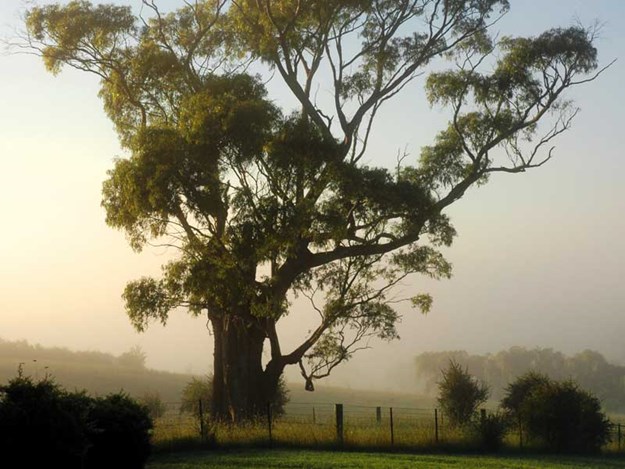 |
A fog reminiscent of Scotland wraps around the Southern Highlands |
Long beaches are bleached white by the sun, and there’s a scattering of small-scale, RV-friendly villages hiding along shaded roads. These were founded on gold, not sapphires. Their names sound like bubbling water: Tilba Tilba, Numbugga, Cobargo, Merimbula, Pambula.
If you want to go wild, there are endless walking tracks through eucalypt forests or along estuaries and isolated beaches. We stayed first at the striking port of Bermagui beloved by posses of pelicans, Zane Grey, and Billy Connolly when he was on location for the filiming of The Man Who Sued God. The next day, we explored Tathra, Tilba Tilba, and Cobargo, which make their present from their past as ‘working’ historic towns.
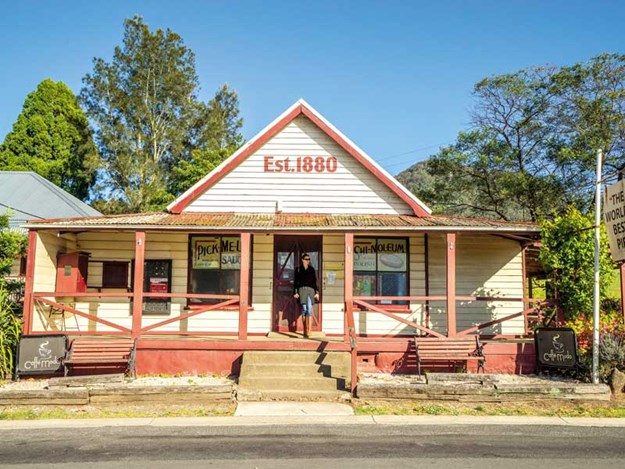 |
Kangaroo Valley pie shop announces the world’s best pies |
“All this stuff for the tourists makes a fellow wanna stamp on his Akubra,” confided a stringy little man in a red shirt. We were sunning ourselves on a seat in Trathra’s main street. Ted was biting into a pie with his few remaining teeth. “The best pies these,” he said holding the crust aloft. The quality of pies in the villages seems as significant as the history. It’s easy to become pie-eyed just from the signage.
We called into Bega, the home of the cheese brand of the same name, and further south, booked into the camping ground at Merimbula. In this sun-drenched settlement, draped alongside a vast estuary and magnificent beaches, we were held captive for several days.
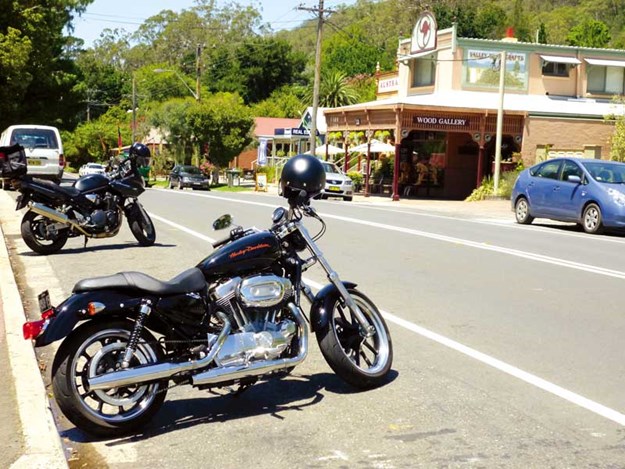 |
Kangaroo Valley’s main drag |
Its laid-back beachy ambience has none of the pushy urbanity of the Queensland Coast. Eden, the southernmost village in New South Wales, is named for George Eden, 1st Earl of Auckland, not its utopian qualities.
It has a whale museum and among the memorabilia, is the skeleton of Old Tom, an orca that once herded baleen whales towards the harpoons in return for rewards of unmentionable morsels from the victims. I can, however, happily mention the merits of touring these southern regions and they bring their own rewards.
Travel tips
- The best time to travel is early and late summer. The area is crowded in the holidays.
- Try to catch the October Tulip Festival in Bowral or at other times visit Corbett gardens. You’ll think you’re in Holland.
- Throughout the region, there are lovely camping grounds and some free reserves for overnight parking.
- Visit the exceptional gardens of Red Cow Farm in Sutton Forrest.
- Berrima has a great little museum documenting the area and the life of the German POWs held there in the First World War.
- Try Dirty Jane’s Cafe in Bowral. Apart from the great food, the antiques and artworks are a feast for the eyes.





